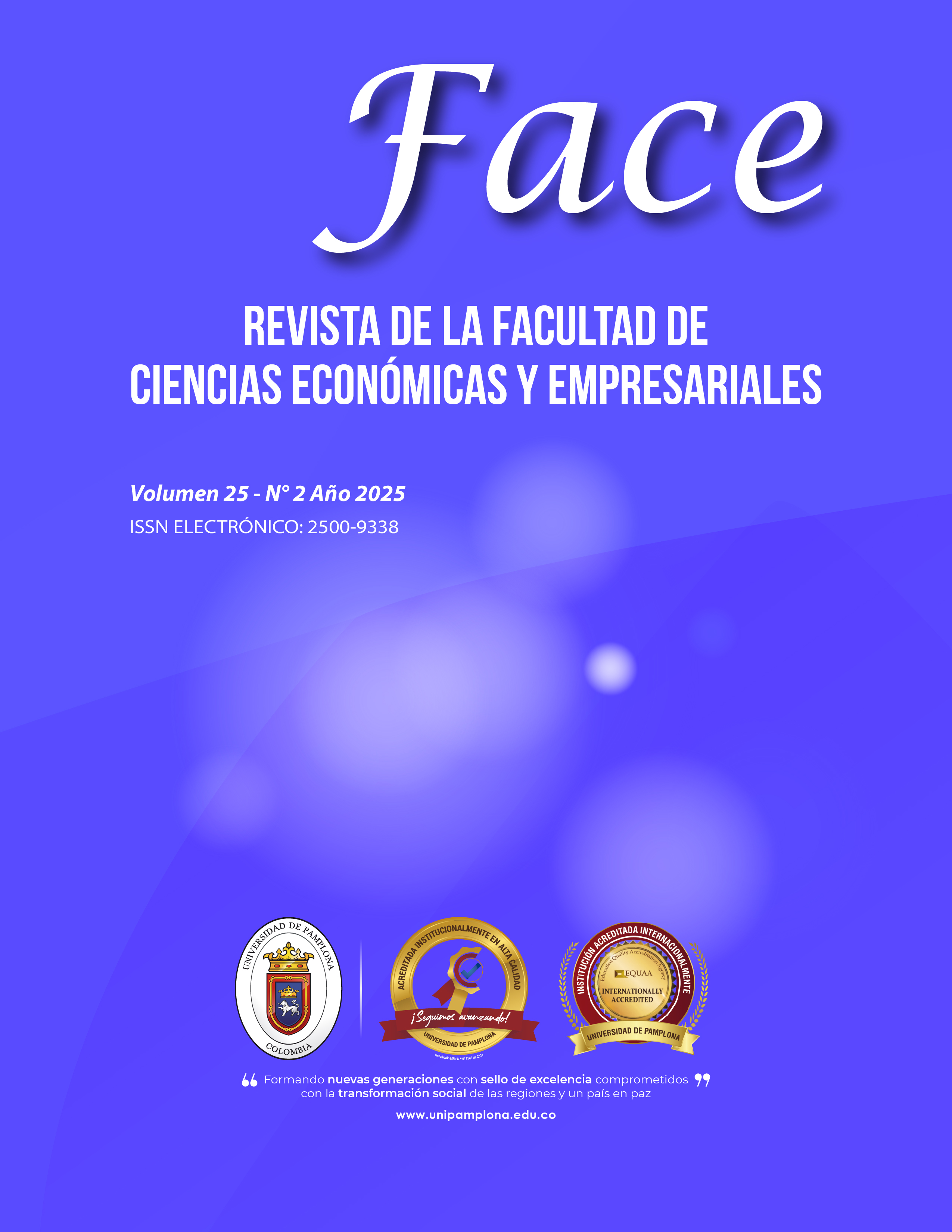Stock market movement of the world's: world's major pharmaceutical companies in the pandemic era
DOI:
https://doi.org/10.24054/face.v25i2.4030Abstract
The objective of this research is to evaluate the behavioral dynamics of the shares of large pharmaceutical companies in the world in the period from 2016-2020, and the impact of the presence of COVID-19 on the finances of these companies. The analysis of the information was carried out by means of the statistical package R version 3.6.1 with interaction with the database reported by the Yahoo Finance portal through time series, where the variables evaluated were: share value at the opening and closing, financial performance, volume of shares issued. It was found that the statistics and economic indexes associated with large pharmaceutical companies in the first half of the year 2020 fell sharply in the stock market, having an effect on returns and on the volume of shares sold daily. With the development of COVID-19 vaccines, pharmaceutical companies generally increased profits, recovering from the crisis associated with the pandemic.
Downloads
References
Ayati, N., Saiyarsarai, P., y Nikfar, S. (2020). Short and long term impacts of COVID-19 on the pharmaceutical sector. DARU J Pharm Sci, 28, 799-805. https://doi.org/10.1007/s40199-020-00358-5
Basile, G. (2018). “La Salud Internacional Sur Sur: hacia un giro decolonial y epistemológico”. Ediciones GT Salud Internacional CLACSO. Buenos Aires Argentina.
Basile, G., Peidro, R., Rodríguez, E., y Angriman, A. (2019). "Caracterización del Complejo Médico Industrial Farmacéutico Financiero en siglo XXI: concentración de mercado, fusiones nacional-multinacional y su impacto en el acceso a medicamentos
y en las fuentes de trabajo del Sector". Ediciones GT Salud Internacional y Soberanía Sanitaria CLACSO.
Brandt, J., Shearer, B., y Morgan, S. G. (2018). Prescription drug coverage in Canada: a review of the economic, policy and political considerations for universal pharmacare. Journal of Pharmaceutical Policy and Practice, 11(28). https://doi.org/10.1186/s40545-018-0154-x
Bell, S. E. y Figert, A. E. (2015). Reimagining (Bio) Medicalization. Pharmaceuticals and Genetics: Old Critiques and New Engagements, New York: Routledge.
Bergel, S. D. (2012). El derecho de acceso a los medicamentos: su reconocimiento y las barreras puestas a su ejercicio, En Casado M, Luna F, (editores). Cuestiones de Bioética en y desde Latinoamérica. Primera ed, Navarra: Civitas Thomson Reuters, 333-348.
Collin, J. (2016). On social plasticity: the transformative power of pharmaceuticals on health, nature and identity. Sociology of Health & Illness. 38(1), 73–89. https://doi.org/10.1111/1467-9566.12342
Lema, S. (2015). Acceso a los medicamentos: las patentes y los medicamentos genéricos, las consecuencias de considerar al medicamento como un bien de mercado y no social. Revista de Bioética y Derecho,34, 81-89, www.bioeticayderecho.ub.edu
Macías, C. (2010). Respuestas institucionales y corporativas a la pandemia de 2009. América Latina ante los actores multinacionales en la producción de medicamentos. Revista Desacatos, 32, 63-88,http://www.scielo.org.mx/pdf/desacatos/n32/n32a6.pdf
Morgan, S., Bathula, H. S., y Moon, S. (2020). Pricing of pharmaceuticals is becoming a major challenge for health systems. BMJ, 368, l4627. https://doi.org/10.1136/bmj.l4627
Ozdurak, C., Alcan, G., y Guvenbas, S. D. (2020). The impact of COVID-19 to global pharmaceuticals and biotechnology company stocks returns. Journal of Business. Economics and Finance. 9(2), 68-79. http://doi.org/10.17261/Pressacademia.2020.1215
Páez, R. (2011). La investigación de la industria farmacéutica: ¿condicionada por losintereses del mercado?. Acta Bioethica, 17(2), 237-246.
Richman, B., Mitchell, W., Vidal, E., y Schulman, K. (2017). Pharmaceutical M&A Activity: Effects on Prices, Innovation, and Competition. Law Journal, 48,https://scholarship.law.duke.edu/cgi/viewcontent,cgi?article=6441&context=faculty
Rodríguez, A. (2014). La realidad detrás de las farmacéuticas: sendas de una posmodernidad que no perdona. Revista Enfermería Actual de Costa Rica. 26, 1-13, http://www.revenf.ucr.ac.cr/farmaceutica.pdf
Torres, A. (2010). Medicamentos y transnacionales farmacéuticas: impacto en el acceso A los medicamentos para los países subdesarrollados. Revista Cubana de Farmacia, 45(1), 97-110, http://scielo.sld.cu/pdf/far/v44n1/far12110.pdf
Valdés Medina, F., Saavedra García, M., & Gutiérrez Navarro, A. (2021). Análisis del impacto de la pandemia COVID-19 en las cotizaciones de las empresas farmacéuticas listadas en el índice NYSE. Cuadernos de Economía, 40(85), 1033-1053. https://doi.org/10.15446/cuad.econ.v40n85.90900
WHO Expert Committee. (2015). The selection and use of essential medicines, Iincluding the 19th WHO Model List of Essential Medicines and the 5th WHO Model List of Essential Medicines for Children. WHO Technical Report Series, No, 994, Geneva: World Health Organization.
WHO. (2015). WHO Guideline on Country Pharmaceutical Pricing Policies. ISBN 978 924154903 5. Department of Essential Medicines and Health Products 20 Avenue Appia 1211 Geneva 27 Switzerland.
Wirtz, V., Hogerzeil, H. V., y Gray, A. et al., (2017), Essential medicines for universal health Coverage. Lancet, 389, 403–76.
Downloads
Published
How to Cite
Issue
Section
License
Copyright (c) 2025 FACE: Revista de la Facultad de Ciencias Económicas y Empresariales

This work is licensed under a Creative Commons Attribution-NonCommercial-ShareAlike 4.0 International License.





